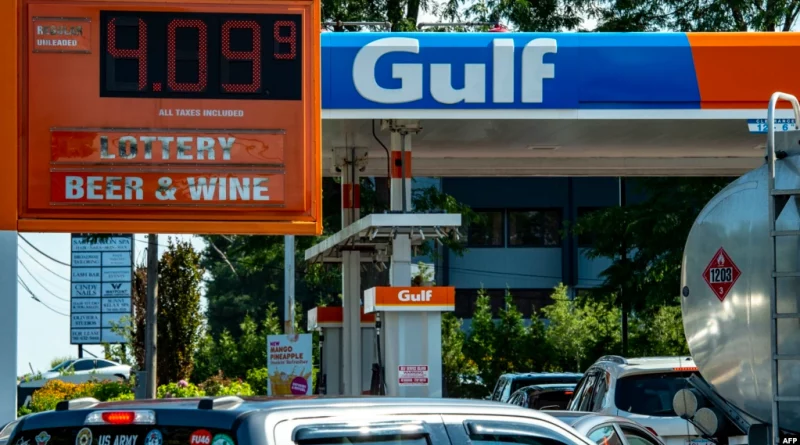U.S. consumer prices unchanged in July due to lower gasoline prices
U.S. consumer prices unchanged in July due to lower gasoline prices
U.S. consumer prices halted their rise in July due to a sharp drop in the cost of gasoline, the first noticeable sign of a slowdown in inflation in two years. The Labor Department reported Wednesday that the consumer price index (CPI) was unchanged last month after rising 1.3 percent in June. However, the report noted that underlying inflationary pressures remain elevated, which in turn suggests that the Federal Reserve is likely to raise its benchmark discount rate in September.
The figures released today were the largest monthly slowdown in price growth since 1973 and followed a drop in gasoline prices of about 20 percent since mid-June. Gas station prices jumped in the first half of this year because of the war in Ukraine, reaching a record high of more than $5 a gallon (3.7 liters) on June 14.
Economists surveyed by Reuters had forecast a 0.2 percent rise in the monthly consumer price index in July. The Fed had previously indicated that it would take several monthly declines in CPI growth before the U.S. central bank would abandon the aggressive monetary tightening now under way to tame inflation, currently at its highest level in four decades.
“This is not yet the significant reduction in inflation that the Fed is aiming for. But it’s just the beginning, and we expect to see broader signs of easing price pressures over the next few months,” said Paul Ashworth, chief economist at Capital Economics.
Consumer prices are rising in the U.S. due to a number of factors, including problems with global supply chains, several large-scale rounds of federal stimulus to deal with the aftermath of the COVID-19 pandemic, and Russia’s military invasion of Ukraine.
Food products are one component of the consumer price index that remained elevated in July, rising 1.1% last month after rising 1.0% in June. Gasoline prices fell 7.7% in July.
Over the past 12 months, the consumer price index has risen 8.5%, and that figure is down from June’s 9.1% year-over-year increase.
The so-called core consumer price index rose 0.3% in July, to a 10-month low, after rising 0.7% in June thanks to a nearly 8% decline in airfares.
Housing rents rose at nearly the same rate as in June. Housing costs account for about 40% of the core CPI figure.
“Although the consumer price index report for July was encouraging, inflationary pressures remain strong, especially in the core service sector, with housing rental prices still rising rapidly,” said Kathy Bostancic, chief economist at Oxford Economics.
The extremely tight labor market is driving up wages, which in turn is driving up service prices. A separate Labor Department report released Wednesday showed that real average weekly earnings rose 0.5 percent in July, the largest monthly gain since January 2021.
The economy added 528,000 jobs last month, the unemployment rate fell to a pre-pandemic low, and wage growth unexpectedly picked up, as the Labor Department reported last Friday in its monthly jobs report.
The U.S. economy contracted unexpectedly in the second quarter, with consumer spending growing at its slowest pace in two years and business spending declining.
The second consecutive quarterly decline in gross domestic product was due in large part to a more moderate pace of cash accumulation by businesses.
